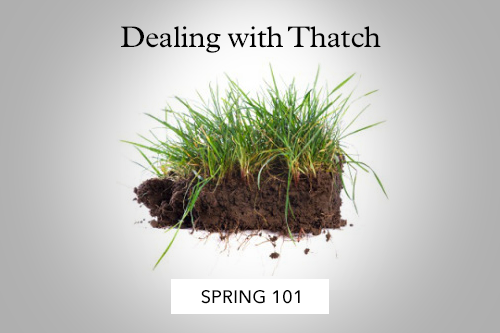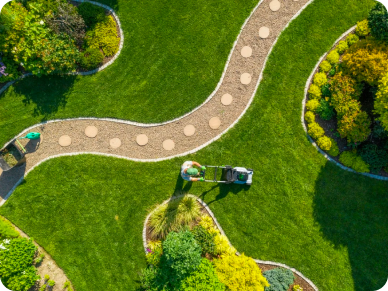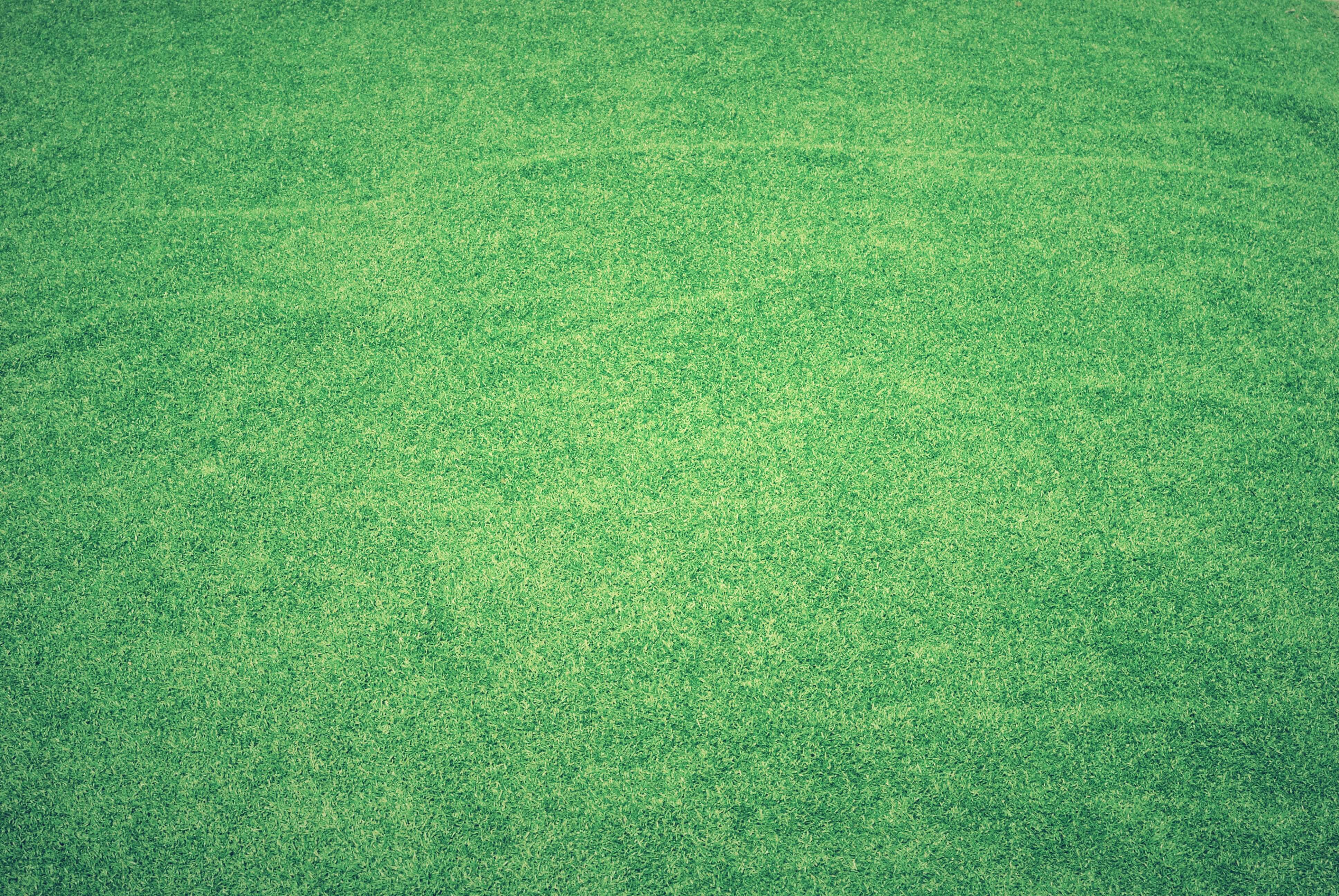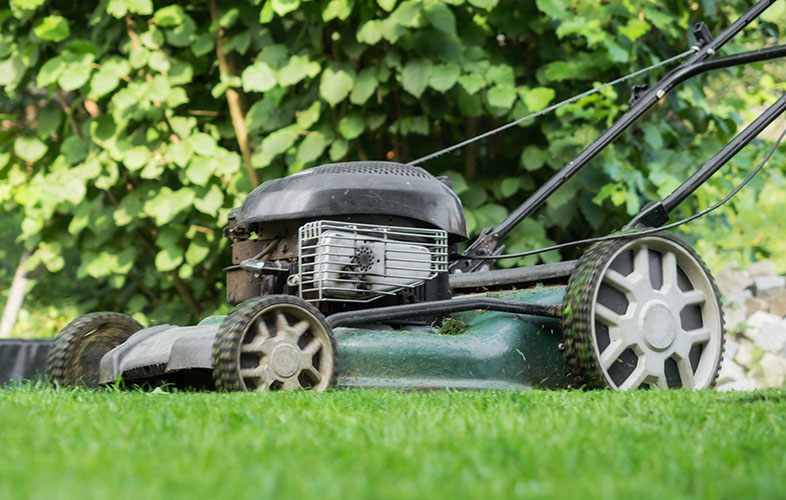Thatch is a naturally occurring layer of dead and living grass stems and roots. In excess, it can decrease the overall health and vigor of a lawn. Learn how we can help combat it.

Dealing with Thatch: Your First Step to a Lush Spring Lawn
Spring is finally here. You’re ready to kick off your shoes, enjoy the warmer weather and spend time with the family in your lawn. But is your grass ready? You may have noticed a layer of dead grass and debris called thatch. Don’t let this common winter nuisance hold your lawn back from meeting its fullest potential.
What is thatch?
Thatch is a naturally occurring layer of dead and living grass stems and roots. In excess, it can decrease the overall health and vigor of a lawn.
A thin layer of thatch, less than 1/2 of an inch thick, can actually benefit the lawn by providing an insulating and cooling effect, but when it builds up, it can be not only unsightly, but cause major damage to your lawn. Thatch accumulates naturally when new grass growth occurs faster than the above ground parts of the plant can decompose.
Why is thatch a problem?
Thatch intercepts water and plant nutrients and creates a barrier to the root zone. It can also be a great home for insects and disease organisms, which can contribute to other? lawn problems. Bottom line? If it’s not taken care of, it can become excessively thick very quickly, which only compounds the previously mentioned problems.
What can you do to help?
- Vertical mowing—there are special machines designed for effectively minimizing thatch on your own called vertical mowers. They have special blades that help pull up thatch and reduce its size, helping speed up the breakdown process.
- Proper irrigation—making sure your lawn is properly irrigated will help maintain a balance between turf growth and thatch breakdown. Too much water? Thatch will be soggy and tough to get rid of. Too little water? Your grass won’t get the proper nutrients to stay healthy.
What can TruGreen do?
One of the best services TruGreen offers to combat thatch is core aeration. This technique brings cores of soil to the top of the lawn where it disintegrates, releasing organisms that help break down thatch as well as make room for water, air and nutrients to access the roots of the grass. Keep in mind, extremely thick layers may require removal by stripping the thatch from the soil, but by taking some preventative measures such as those listed above, the thatch should remain manageable. Want to see if core aeration is included in your plan? Contact us and we’ll work together to ensure your lawn is getting the care it needs.




 Branch Finder
Branch Finder













